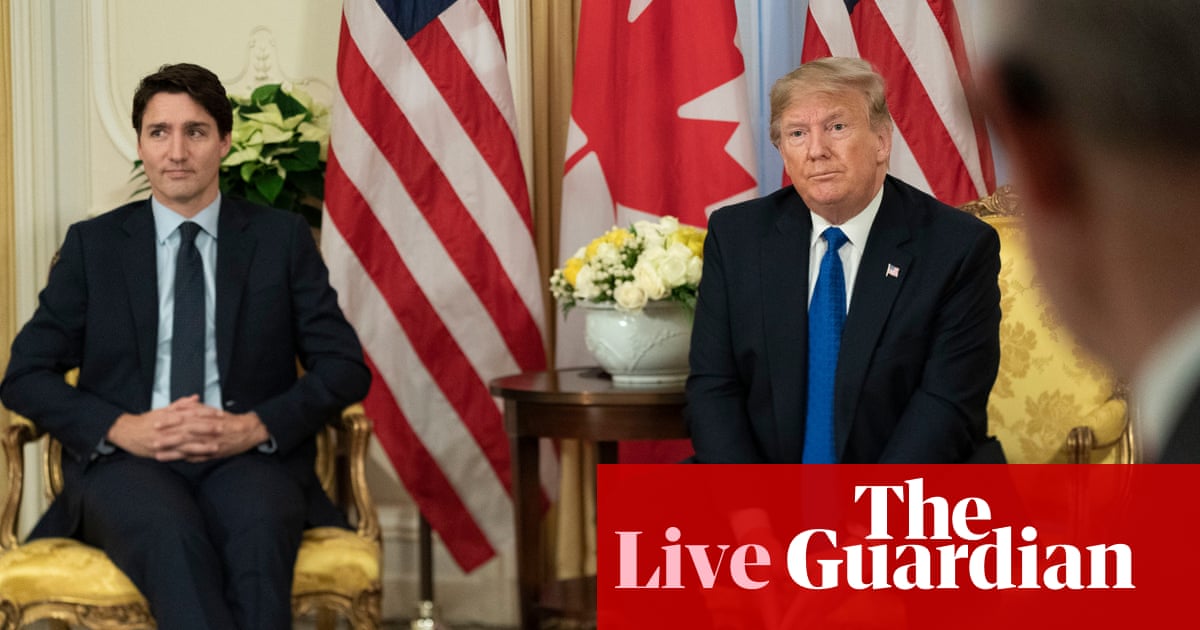
A US soldier who crossed into North Korea during a tour of the demilitarised zone (DMZ) on Tuesday was believed to have been taken into custody, creating a fresh headache for the White House amid heightened tensions over Pyongyang’s nuclear ambitions.
UN Command, which oversees the DMZ between South Korea and North Korea, said: “A US national on a [joint security area] orientation tour crossed, without authorisation, the military demarcation line into the Democratic People’s Republic of Korea.
“We believe he is currently in DPRK custody and are working with our [Korean People’s Army] counterparts to resolve this incident.”
US officials told news outlets the individual was a US soldier. An official told Reuters the soldier crossed into North Korea “willfully and without authorisation”.
South Korean media named the individual, then deleted the name from reports. According to Reuters, the Donga and Chosun Ilbo newspapers cited South Korean army sources when they said the man was with a group of visitors, including civilians, to the Panmunjom truce village “when he suddenly bolted over the brick line marking the border”.
Two US officials, speaking anonymously, told Reuters the soldier was due to face disciplinary action. According to CBS News, the soldier was being escorted back to the US but after going through airport security somehow returned to join the tour.
A person who was part of the same group told CBS they had just visited a building then “this man gives out a loud, ‘Ha ha ha’, and just runs in between some buildings.” CBS cited the witness as saying military personnel reacted quickly but initially there was confusion.
“I thought it was a bad joke at first but when he didn’t come back I realised it wasn’t a joke and then everybody reacted and things got crazy,” the witness was quoted as saying.
According to CBS, the witness said there were no North Korean soldiers visible where the man ran, and that the group had been told there had not been since the coronavirus pandemic, when North Korea sought to seal its borders.
At a Pentagon briefing, the defense secretary, Lloyd Austin, said: “There’s a lot that we’re still trying to learn. We believe that he is in custody and so we’re closely monitoring and investigating the situation and working to notify the soldier’s next of kin.”
The White House press secretary, Karine Jean-Pierre, said the US was working with North Korea to “resolve this incident”.
The state department tells US nationals not to enter North Korea “due to the continuing serious risk of arrest and long term detention”. Defections by Americans or South Koreans to North Korea are rare. Since the end of the Korean war, which was fought between 1950 and 1953, more than 30,000 North Koreans have fled south to avoid political oppression and economic hardship.
Numbers of defectors have fallen recently, in large part due to North Korean precautions over Covid-19. During the pandemic, foreign embassies in Pyongyang closed down.
During the cold war, a small number of US soldiers defected to North Korea. Among them was Charles Jenkins, who deserted his post in 1965. He appeared in North Korean propaganda films and married a Japanese nursing student who had been abducted by North Korean agents. He died in Japan in 2017.
Panmunjom was created inside the demilitarised zone (DMZ) at the close of the war. No civilians live in the area, which is jointly overseen by the UN Command and North Korea.
Bloodshed and gunfire have occurred. In 1976, two US officers who tried to prune a tree were beaten to death, bringing Pyongyang and Washington to the brink of war. But the DMZ has also been a venue for talks and has become a popular tourist spot.
Some Americans arrested in North Korea after allegedly entering from China have been convicted of espionage and other anti-state acts but released after high-profile US missions to secure their freedom.
The last three known American detainees were released in 2018, as the North Korean leader, Kim Jong-un, engaged in nuclear diplomacy with Donald Trump, a process that led to the two leaders meeting at the DMZ and shaking hands.
Those releases made a striking contrast to the fate of Otto Warmbier, an American student who died in 2017, days after he was released in a coma after 17 months in captivity. Warmbier and other American detainees in North Korea were imprisoned over a variety of alleged crimes, including subversion, anti-state activities and spying.
Talks between Trump and Kim collapsed in 2019, amid disagreements over sanctions. In a book published in the US on Tuesday, a former Trump homeland security aide, Miles Taylor, describes how the administration worried “that the president would accidentally lead us into a nuclear war with North Korea”.
The border crossing on Tuesday took place amid high tensions over North Korean missile tests since the start of last year. Earlier on Tuesday, the US sent a nuclear-armed submarine to South Korea for the first time in decades, to act as a deterrent against the North.










 English (US)
English (US)